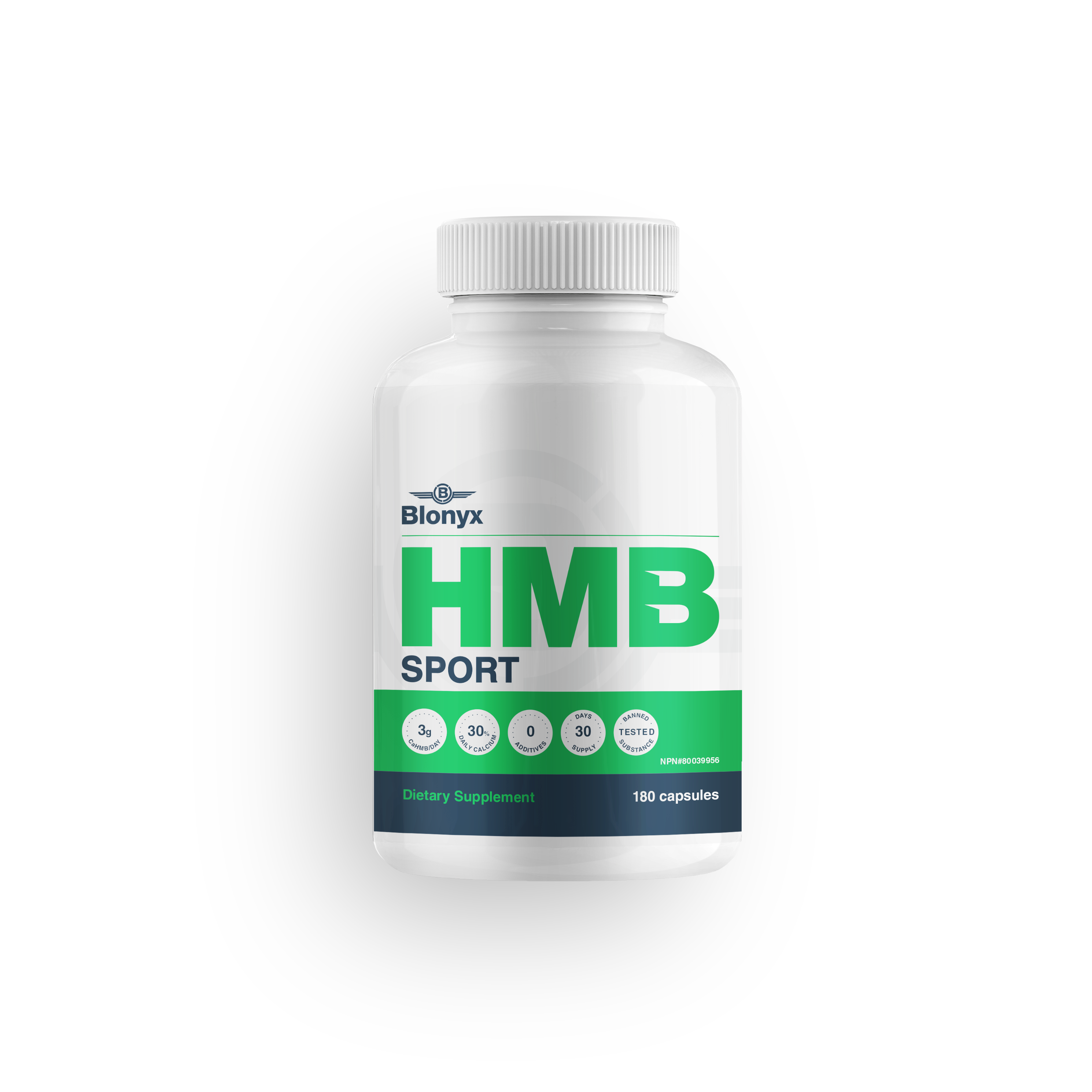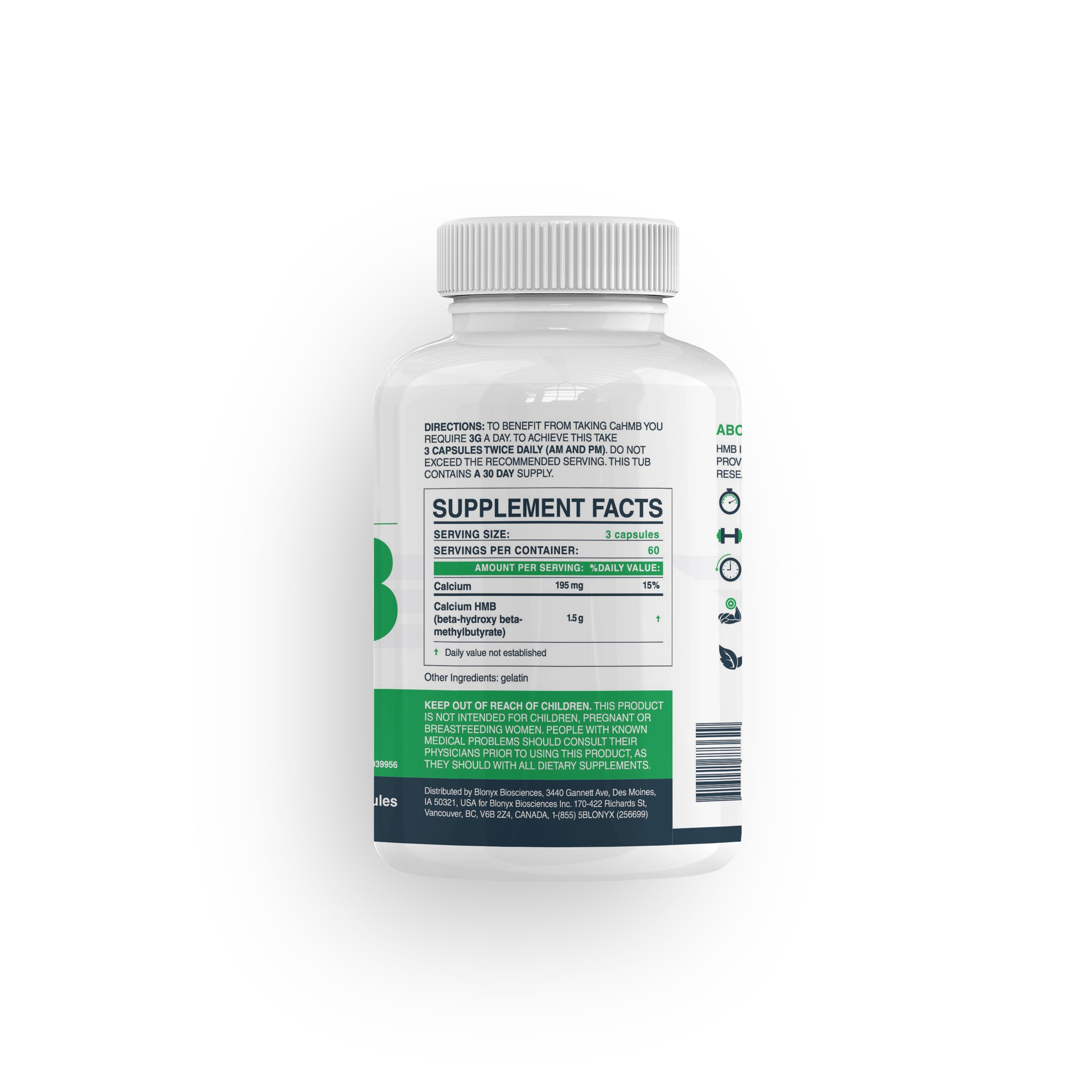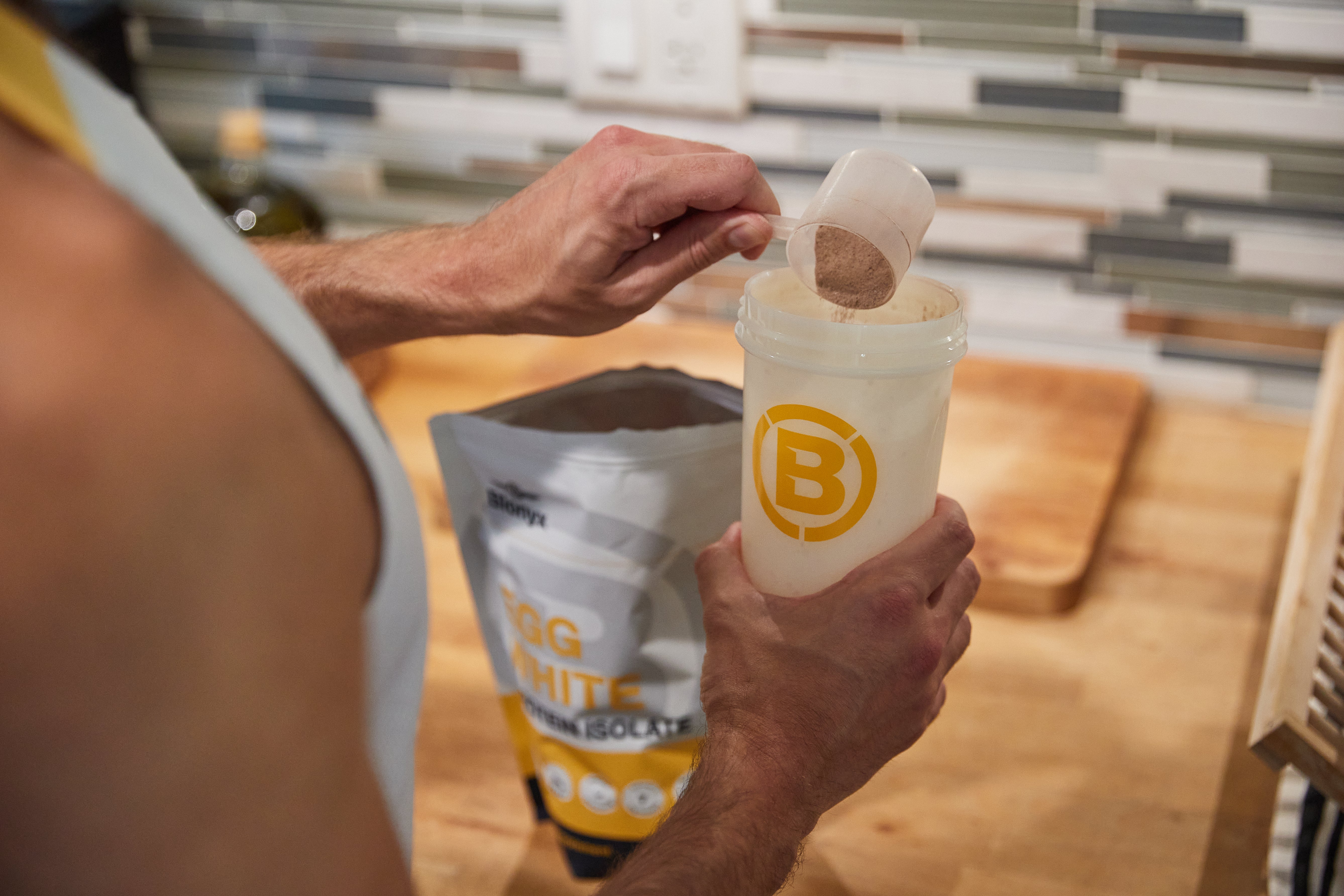HMB has a very bitter taste, so usually comes in capsule form or a blended and flavored powder. Research shows it is cleared from your body quite quickly, so you’ll need to take it 2-3x a day for the best results (we suggest 2x, am and pm). Blonyx HMB Sport comes in a capsule. Our HMB+ Creatine is an unflavored powder that can be mixed with your favourite smoothie, protein shake, or taken on its own.
If you’re training for performance
NOTE:
HMB supports muscle adaptation and recovery. It will be less effective if you’re not training at your limits/at a higher intensity to get this adaptation. Don’t be afraid to push your limits when using HMB.
Week 1-2:
Your muscle levels of HMB will be increasing and you’ll start to notice that you aren’t quite as sore as you usually are after training.
Week 3-4:
This is when you’ll start to notice some performance improvements. You’ll feel fresher when training, feel more recovered and able to train at a higher intensity (which you should do)
Month 2 of regular training: You’ll be able to train at a higher intensity and more frequently with the body able to handle the volume. The progress you make will start to speed up, regardless of the training you do. If you’re measuring performance, this is when you’ll start to see impact.
If you’re recovering from injury:
If you’re taking HMB to prevent muscle loss through injury or inactivity you’ll notice the impact of taking HMB in the return-to-sport process. You’ll have lost less power, strength and muscle mass, cutting your return time.
Anecdotally, we find that many athletes report that they notice when they stop taking HMB. They report a noticeable increase in training induced soreness.
























